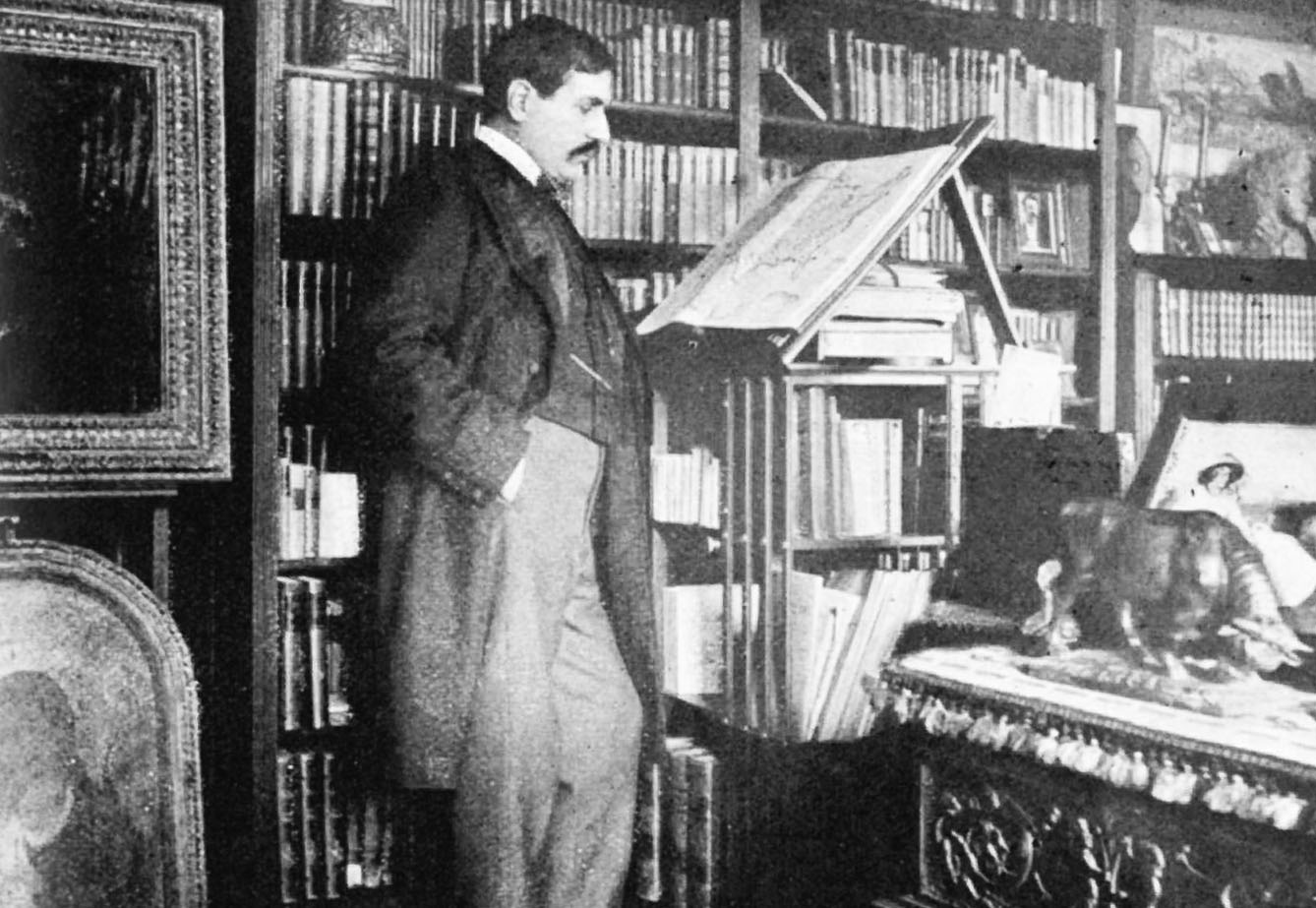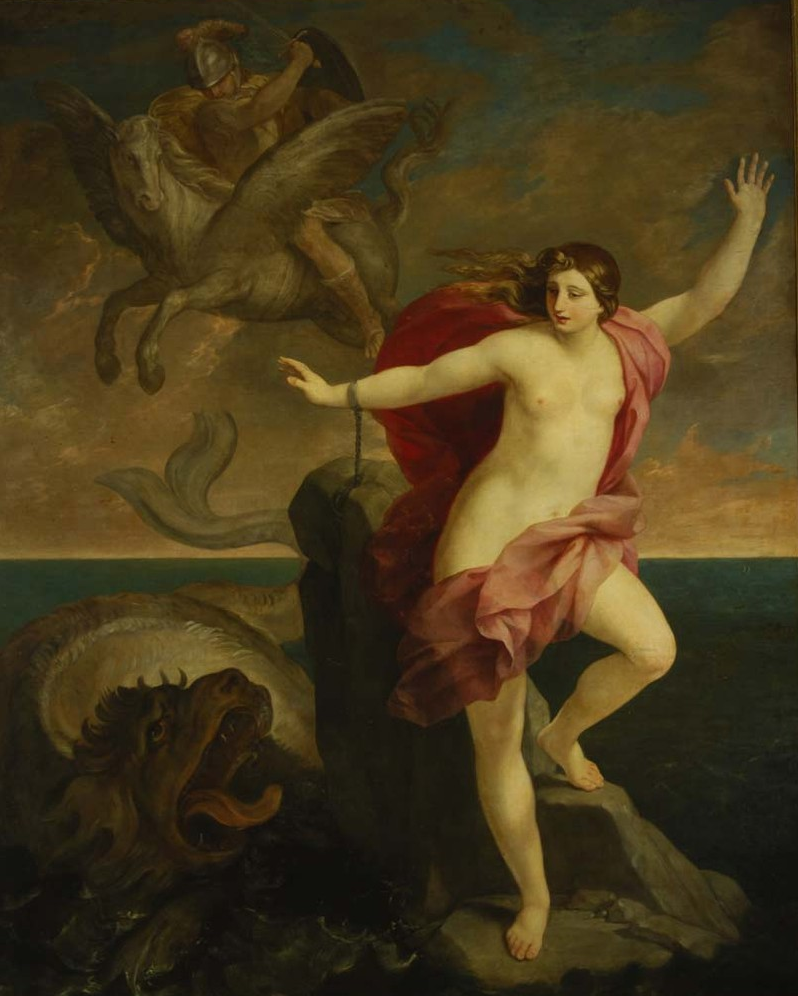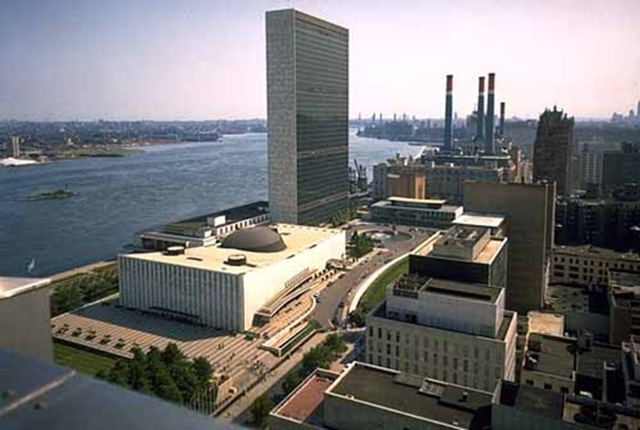M
I
C
R
O
S
T
O
R
Y
O
F
A
R
T
........................................................

NOW COMPLETED:

........................................................
MICROSTORY OF ART
ONLINE JOURNAL FOR ART, CONNOISSEURSHIP
AND CULTURAL JOURNALISM
........................................................
INDEX | PINBOARD | MICROSTORIES |
FEATURES | SPECIAL EDITIONS |
HISTORY AND THEORY OF ATTRIBUTION |
ETHNOGRAPHY OF CONNOISSEURSHIP |
SEARCH

........................................................



 >MICROSTORIES
>MICROSTORIES
- Richard Serra
- Martin Scorsese
- Claude Simon
- Sunshine
- Werner Herzog
- The Creation
- Marcel Duchamp
- Nino Rota
- Wölfflin and Woolf
- Hansjörg Schneider
- Kraftort Arkadien
- Visual Biography
- Schlaraffenleben
- Die Geisteswissenschaften
- The Voyeur
- Buzzword Sustainability
- Paul Verlaine
- Tao Yuanming
- New Beginning
- Seneca
- Still Lifes
- Charles Baudelaire
- Frédéric Chopin
- The Art History of Sustainability
- Wang Wei
- Solarpunk
- Historians of Light
- Lepanto
- Renaturalization
- Plates
- Snow in Provence
- Learning to See
- Picasso Dictionaries
- Peach Blossom Spring
- Picasso Tourism
- Tipping Points
- Sviatoslav Richter
- Weather Reports
- Treasure Hunt
- Another Snowscape in Picasso
- Picasso in 2023
- Dragon Veins
- The Gloomy Day
- The Art of the Pentimento
- Reforestation
- The Status of Painting
- Emergency Supply
- Punctuality
- Watching Traffic
- Zhong Kui
- How Painting Survived the 1990s
- Confirmation Bias
- Sustainability and Luxury
- Garage Bands
- Picasso and Artificial Intelligence
- Eyes of Tomorrow
- Picasso in 2023 2
- Gluing Oneself to Something
- Suburbia
- Bamboo
- Sustainability and Carpe Diem 1
- Interviews with Bruegel
- Sustainability and Carpe Diem 2
- Coffee & Sugar
- Bamboo 2
- Picasso in 2023 3
- Sustainability and Carpe Diem 3
- Cherry Orchard
- Old Magazines
- Chance
- Nick Drake
- Harlequin
- The Smartphone & the Art Book
- Atlas Syndrome
- The Kitchen
- Atlas Syndrome 2
- Consideration
- Tori Amos
- School
- Orchard Auctioning Day
- The Hundred Years’ War
- Sócrates
- Chameleon
- Nefertiti Bust
- Picasso as a Computer
- Sunflowers
- Philemon & Baucis
- Ode to the Radio
- Childhood
- Wimmelbild
- Restitution
- Nick Drake 2
- Wishful Thinking
- Sundays
- The Independent Scholar
- September
- The Fisherman by Pirosmani
- Microadventure
- Sociology
- Salvator Mundi
- Chillon
- Appassionata
- Amber
- Homer
- Berlin
- Planet Walk
- Improvisation
- Seeing Picasso
- These Nice Kids
- Robber
- The One
- The Sea Turtle
- Zoo
- Through the Hush
- Wunderkammer
- I Do Not Seek, I Find
- Shopping Mall
- Food Hamper
- The Secretary
- This Gate
- Nor Rainy Day
- House on a Hill
- Beautiful Island
- Second-hand Bookstore
- Flat
- Slap in the Face
- Serra, Wenkenpark
- Apologies
- The Bells
- Nordmann Fir
- Picasso Wanting To Be Poor
- Picasso, Pirosmani
- A Brief History of Sculpture
- 24 Sunsets
- Rusty Phoenix
- Glove
- Wintry Stanza
- A Song
- Like A Beatle
- Catching An Orange
- Solar Bees
- Permaculture

 >FEATURES
>FEATURES
- Van Gogh On Connoisseurship
- Two Museum’s Men
- Ende Pintrix and the City in Flames
- Titian, Leonardo and the Blue Hour
- The Man with the Golden Helmet: a documentation
- Un Jury d’admission à l’expertise
- Learning to See in Hitler’s Munich
- Leonardo da Vinci and Switzerland
- The Blue Hour Continued
- The Blue Hour in Louis Malle
- Kafka in the Blue Hour
- Blue Matisse
- Blue Hours of Hamburg and LA
- A Brief History of the Cranberry
- The Other Liberale in the House
- The Blue Hour in Raphael
- Who Did Invent the Blue Hour?
- Monet on Sustainability
- Velázquez and Sustainability
- The Blue Hour in Guillaume Apollinaire
- Van Gogh on Sustainability
- The Blue Hour in Marcel Proust
- Picasso and Sustainability
- The Contemporary Blue Hour
- The Blue Hour in 1492
- The Blue Hour in Hopper and Rothko
- Hopper and Sustainability
- The Blue Hour in Ecotopia
- The Hour Blue in Joan Mitchell
- Explaining the Twilight
- The Twilight of Thaw
- The Blue Hour in Pierre Bonnard
- Explaining the Twilight 2
- Picasso on Stalin
- Rubens on Sustainability
- The Salvator Mundi in Bruegel and Rubens
- The Blue Hour in Leonardo da Vinci and Poussin
- The Blue Hour in Rimbaud
- Faking the Dawn
- Frost and Thaw in Ilya Ehrenburg
- Picasso, Stalin, Beria
- Picasso, Solzhenitsyn and the Gulag
- Shostakovich on Picasso
- Hélène Parmelin in 1956
- Historians of Picasso Blue
- Picasso Travelling to Moscow 1
- The Blue Hour in Caravaggio
- Picasso Travelling to Moscow 2
- Picasso, the Knife Game and the Unsettling in Art
- Some Notes on Leonardo da Vinci and Slavery
- Picasso Moving to the Swiss Goldcoast
- The Blue Hour in Camus
- The Blue Hour in Symbolism and Surrealism
- Caspar David Friedrich in His Element
- Exhibiting the Northern Light
- Caspar David Friedrich in His Element 2
- Robert Schumann and the History of the Nocturne
- The Blue Hour in Robert Schumann
- Caspar David Friedrich and Sustainability
- The Twilight of Thaw 2
- Multicultural Twilight
- The Blue Hour in Anton Chekhov
- The Blue Hour in Medieval Art
- Twilight Photography
- The Blue Hour in Bob Dylan
- Iconography of Optimism

 >SPECIAL EDITIONS
>SPECIAL EDITIONS
- Visions of Cosmopolis
- Mona Lisa Landscapes
- Turner and Ruskin at Rheinfelden
- Painters On TV & On TV
- Spazzacamini in Art
- A Last Glance at Le Jardin de Daubigny
- The Experimental Cicerone
- A Dictionary of Imaginary Art Historical Works
- Iconography of Blogging
- Begegnung auf dem Münsterplatz
- Cecom
- Das Projekt Visual Apprenticeship
- Those Who See More
- A Fox on Seeing with the Heart
- Sammlung Werner Weisbach
- Daubigny Revisited
- Some Salvator Mundi Microstories
- Some Salvator Mundi Afterthougths
- Some Salvator Mundi Variations
- Some Salvator Mundi Revisions
- A Salvator Mundi Questionnaire
- A Salvator Mundi Puzzle
- Unknown Melzi
- Francis I and the Crown of Charlemagne
- From Amboise to Fontainebleau
- Drones Above Chambord
- Looking Back At Conques
- Flaubert At Fontainebleau
- Images of Imperial Ideology
- The Chronicles of Santa Maria delle Grazie
- Seeing Right Through Someone
- Melzi the Secretary
- Eying Glass
- A Foil to the Mona Lisa
- A Renaissance of the Cartoon
- Sketching a Family Tree
- Venetian Variations
- A Brief History of Digital Restoring
- A Consortium of Painters
- Leonardeschi and Landscape
- A Christ in Profile
- Learning to See in Spanish Milan
- A History of Gestures
- Leonardo and Josquin
- A Renaissance of the Hybrid
- Suida and Heydenreich
- The Watershed
- Three Veils
- From Beginning to End
- Connoisseurship of AI
- Twilight and Enlightenment
- The Blue Hour in Chinese Painting
- Dusk and Dawn at La Californie
- Iconography of Sustainability
- The Blue Hour in Goethe and Stendhal
- The Sky in Verlaine
- The Blue Hour in Paul Klee
- Iconography of Sustainability 2
- The Blue Hour in Charles Baudelaire
- From Bruegel to Solarpunk
- Some Salvator Mundi Documentaries
- Some More Salvator Mundi Monkey Business
- The Windsor Sleeve
- Brigitte Bardot’s Encounter with Picasso
- Art Historians and Historians
- A Salvator Mundi Chronicle
- The Salvator Mundi and the French Revolution
- The Fontainebleau Group
- The Encounter of Harry Truman with Pablo Picasso
- The Fontainebleau Group Continued
- The Windsor Sleeve Continued
- The Salvator Mundi in Early Netherlandish Painting 1
- Some Salvator Mundi Resources
- A New Salvator Mundi Questionnaire
- The Woman in Picasso
- The Yarborough Group
- Melzi, Figino and the Mona Lisa
- The Yarborough Group Continued
- A Salvator Mundi Global History
- The Salvator Mundi in Medieval Art
- The Salvator Mundi in Medieval Art 2
- The Salvator Mundi in Early Netherlandish Painting 2


 >HISTORY AND THEORY OF ATTRIBUTION
>HISTORY AND THEORY OF ATTRIBUTION
- The Mysterious »Donna Laura Minghetti-Leonardo«
- Assorted Demons of Connoisseurship
- Panofsky Meets Morelli
- Discovering the Eye of Sherlock Holmes
- Handling the Left-handed Hatchings Argument
- Visual History of Connoisseurship
- Alexander Perrig
- Connoisseurship in 2666
- What Postmodernity Has Done to Connoisseurship
- Dividing Four Fab Hands
- A Leonardesque Ambassador
- Test Cases in Connoisseurship
- A Raphael Expertise
- How to Tell Titian from Giorgione
- Louise Richter
- The Unique Property in the History of Connoisseurship
- An Expertise by Berenson
- The Book of Expertises
- An Album of Expertises
- An Expertise by Friedländer
- A Salvator Mundi Provenance
- How to Tell Leonardo from Luini
- An Expertise by Crowe and Cavalcaselle
- An Expertise by Bayersdorfer
- An Expertise by Hermann Voss
- An Expertise by Hofstede de Groot
- Leonardeschi Gold Rush
- An Unknown »Vermeer«
- An Expertise by Roberto Longhi
- An Expertise by Federico Zeri
- A Salvator Mundi Geography
- A Salvator Mundi Atlas
- The Bias of Superficiality
- 32 Ways of Looking at a Puzzle
- James Cahill versus Zhang Daqian
- Five Fallacies in Attribution
- On Why Art History Cannot Be Outsourced to Art Dealers
- On Why Artificial Intelligence Has No Place in Connoisseurship
- Salvator Mundi Scholarship in 2016
- Leonardo da Vinci at the Courts
- The Story of the Lost Axe
- The Last Bruegel
- A Titian Questionnaire
- On Where and Why the Salvator Mundi Authentication Did Fail
- The Problem of Deattribution

 >ETHNOGRAPHY OF CONNOISSEURSHIP
>ETHNOGRAPHY OF CONNOISSEURSHIP
MICROSTORY OF ART
ONLINE JOURNAL FOR ART, CONNOISSEURSHIP
AND CULTURAL JOURNALISM
........................................................

***
ARCHIVE AND FURTHER PROJECTS

1) PRINT


***
2) E-PRODUCTIONS


........................................................

........................................................

........................................................
FORTHCOMING:


***
3) VARIA

........................................................

........................................................

........................................................

........................................................

........................................................
***
THE GIOVANNI MORELLI MONOGRAPH

- The Giovanni Morelli Monograph
........................................................
MICROSTORY OF ART
ONLINE JOURNAL FOR ART, CONNOISSEURSHIP AND CULTURAL JOURNALISM
HOME
MICROSTORY OF ART
MICROSTORY OF ART 
ONLINE JOURNAL FOR ART, CONNOISSEURSHIP AND CULTURAL JOURNALISM

Visions of Cosmopolis
Chicago born performance artist Laurie Anderson (http://en.wikipedia.org/wiki/Laurie_Anderson) is said to have provided the New York article for the Encyclopaedia Britannica. I like to think that this is a myth. – Which does not mean that there isn’t probably a grain, or several grains, of truth in it. I only like the idea better that this is a myth. Because I like the idea how an image of New York, an image of Cosmopolis, shapes in the minds of visual artists and writers, invited by the Encyclopaedia Britannica, and by this stimulated to make strolls and to think about their vision of New York.
How would the novelist and writer Don DeLillo have responded, for example, if he had been asked, to such an editor’s request. Or Herman Melville? Or French writer Paul Bourget (http://en.wikipedia.org/wiki/Paul_Bourget), who did publish, in 1892, the other novel called Cosmopolis (by which, by the way, Bourget was referring to the universal city of Rome)? The outcome of this stimulating of writers would probably not have been a single article for the Encyclopaedia Britannica, but rather songs, lyrics, novels and other works of art. But this is hardly a catastrophe at all. Let’s take the question as a starting point to assemble some snippets that might add up or not add up in the end as a collective imaginary image of Cosmopolis, the universal city, or at least its idea, its vision. From Herman Melville to Laurie Anderson, and still beyond.
Visions of Cosmopolis. From Herman Melville to Laurie Anderson and Beyond

Paul Bourget (picture: didiergouxbis.blogspot.com)

Don DeLillo (picture: hilobrow.com)
The universal book store of Cosmopolis will provide us, if we are nice and do not behave like anarchists, with a copy of Moby-Dick. And it is the idea of the universal city’s bookstore that we have to honor first.
Because we have looked into both novels that are called Cosmopolis, the one novel by Paul Bourget, of 1892, that is dealing with the universal city of Rome; and the one by Don DeLillo, of 2003, that is dealing with the universal city of New York, the city of the future. And what both novels have in common, at least at a first glance, is that the motif of the bookstore does play a role. The tiny, cozy bookstore, the quiet seclusive garden of culture, the monastery library kind of bookshop, the oasis of wisdom?
Not exactly. Because in Bourget‘s novel of 1892 the bookstore is led by an socialist with a revolutionary history. To whom a monarchist aristocrat pays visit in the first chapter, and the only thing that these two men apparently have in common is, that they seem – seem – to share a common passion for books (but the monarchist is also humiliated by the socialist owner of the bookshop who keeps him waiting while still finishing something like an undefined manifest.

(Picture: www.johnnydepp-zone.com)
»Because it’s semi-underground«, the young woman poet Elise says in Cosmopolis, the movie by David Cronenberg of 2012 (http://en.wikipedia.org/wiki/Cosmopolis_%28film%29), based upon Don DeLillo’s novel of 2003 (http://en.wikipedia.org/wiki/Cosmopolis_%28novel%29). When explaining, or commenting upon, during weirdly-akward conversation, why she liked the bookstore, where her husband, asset manager Erick Packer, did pick her up before to take her to lunch.
»Recite to me«, had been his first words, when appearing, unexpectedly and uninvited, down to the semi-underground Gotham Book Mart (http://en.wikipedia.org/wiki/Gotham_Book_Mart), a book shop, by the way, that closed its doors in 2007 (and no, she did not recite to him).
»Semi-underground«, is probably to be understood literally here, but also in its metaphoric sense (but the characters of Don DeLillo’s Cosmopolis, if they are speaking, seem to speak and not to speak, that is: if language comes out of their mouths, it is at best processed by the individual characters, because what comes out, are mainly the contemporary discourses of the day, often only helplessly processed by the (for the moment, but changes are to come, very successful) individuals, who live somewhere inbetween the present and the future (and occasionally in the past). The Eric Packer of the novel, by the way, is equipped with some, partly real, partly only extravagant predilection for poetry, not for the poems of his wife though, but still a predilection that is brought out less by the movie (who, on the other hand, has its own merits, but we will come to that).

(Picture: exurbe.com)
*
Now that everyone of our readers has entered his or her bookshop of choice, we might proceed. We ask for a copy of Moby-Dick in our semi-underground bookshop of our personal Cosmopolis, and the grumpy owner of that bookshop asks us immediately, if we wanted a small one or a large one.
After we have mumbled something that could be interpreted either as a yes or as a no, the owner of the bookshop gets us a copy, seemingly rather a large one, but obviously he has become somewhat angry, too, but he does not show it very explicitly. This is because we have signaled to the owner, with our not decidedly asking for a complete edition, that we have not yet decided if we wanted become a connoisseur of whales. And that we might have asked simply for a good adventurous story.
Big mistake. Poor we. We browse a little through that large copy of Moby-Dick, and we get a bit confused, because indeed this seems to be not only an adventurous story, but also a complete guide as to the whale, and as to the white-wale in particular, in other words, a novel about whale connoisseurship
And now the owner of the bookshop, who could’t help than listening to our more or less silent soliloquy has gotten really angry. Because instead of finishing his anarchist manifest in peace in quiet at his half-hidden, overloaded desk in the very back of the shop, this anarchist owner of this tiny bookshop now has to give us a lesson in Herman Melville connoisseurship. Yes, lucky we.
But since he has also a past of teaching, he does not a little enjoy this after a while, and after a while of getting to know each other, he says:

Where only did Guido Reni find this beast…?
»Many people think that Moby-Dick is all about a white whale, and about hunting this white wale. And of course there is also some truth in it. But Moby-Dick is also about the whale in relation to everything else. And in that the whale, besides of being the central symbol of that novel that we rather leave undefined, the whale serves as the organizational principle of looking at everything else, of looking at the whole universe, or if you like, at our Cosmopolis. And this is why everyone – and there were many – who thinks that this novel deserves a little shortening here and there, for the adventurous story to become more digestible, is badly mistaken. Because that would make it impossible, for example, to discuss the whale in relation to the pictorial arts (chapter 55 and 56), and, all of a sudden, the pictorial arts would be simply eliminated from our Cosmopolis. – But let us look only at chapter one, wherin we do find the beautiful short but profound description of Manhattan. If we would think now that our narrator, we may call him Ishmael, is only keen to leave the city as soon as possible, because the city does not interest him and he does actually only describe how the people of Manhattan are drawn to the sea, we are badly mistaken again. In describing a Sunday in Manhattan, with all the people striving to get as close to the sea as possible, he does on the one hand say: look we are all alike, because you are as drawn to the sea as I am (and you may have a reason to join the hunt for the whale as I have). But don’t trust him in suggesting that he is not interested in everything that happens in our city and on land in general. Because in chapters 55 and 56 (dedicated to representations and misrepresentations of whales within the pictorial arts, he does let us know in passing by that he has haunted all the art galleries of Europe, in hunt of good representations of the whale (and he discusses scenes of battles as well), and while you might have a library aboard of a ship, and while you may have even time to read books, this haunting of galleries is something that you have to do on mainland. And be sure, the narrator of Moby-Dick has not only visited the galleries of Europe, but he has also read his way through our tiny bookshop here as well, but not from A to Z (another, but rather stupid principle, but everything in relation to – the whale).
But let’s look at an old Manhattan city map, for a change, a map of the city that, as Walt Whitman did say, »nested in bays«. And you can well imagine how on every Sunday, everyone strives to get as close to the sea as possible. You just have to follow one of these channels that lead from West to East and East to West, as if you were, not a whale, but for example a white eel. And this is Cosmopolis, but in Moby-Dick, Cosmopolis is transferred to a ship, and we spare this for another lesson to discuss all the voices, the common singing, the various cultures aboard of a ship (the World Music of the 19th century) in chapter 40, but it is worth underscoring that Moby-Dick is about Cosmopolis as well, in that it does indirectly refer to the city’s inhabitants (that despite all the differences strive to the sea), and in that it uses the ship to give us a poetic and quintessential picture of a Cosmopolis.«

(Picture: lit.genius.com)

(Picture: polar-reisen.ch)
While listening to the old Corsican anarchist’s lesson (whose name was Ribalta) I have been browsing the volume a little and just in browsing I have come over the passage on the Narwhal (http://en.wikipedia.org/wiki/Narwhal), the »sea-unicorn« as it is called as well, and indeed I do remember having seen a TV-quiz show where one man did make a lot of money because of being able to tell the difference between the Narwhal and other species of whales. And I see (but I did not say this aloud to the old anarchist) that a trifle of whale connoisseurship might indeed be of some use on mainland as well (however the man who had won all that money had actually not learned about the Narwhal from reading Moby-Dick, but from visiting a museum of natural history with his kids, which seems to be also a good method in acquiring some basic whale connoisseurship).
*
If we now strive to see the bays, to see waters, to see the shore, be it the Hudson or the East River, we face the decision whether to turn east or to turn west, since we are lodged in a small budget hotel in 47th Street (the cheapest that we could find), close to the Theatre district at Midtown (http://en.wikipedia.org/wiki/47th_Street_%28Manhattan%29). Going east to see the UN district (and the apartment of Eric Packer)? Or going west towards Hell’s kitchen?
Let it be a day with poetry on our mind, and we turn east. Because among the many poems on New York that are assembled in a charming anthology of New York poetry that I happen to own, there’s one poem in particular that could also be read as a poem on Cosmopolis. It’s called This Dark Apartment, it is by James Schuyler (http://en.wikipedia.org/wiki/James_Schuyler), it was published in 1980, and I image that asset manager Eric Packer might have read it too, if being in a mood for poetry (and not gliding, in his white eel-like stretchlimousine, through the channels of Manhattan). It’s curious these being in some ways old-fashioned of people that represent the Cosmopolis of the millenium (the novel Cosmopolis is set in April of 2000). No e-book readers, and this taste for five- or six-line long poems, stamped into old-fashioned paper, that has the allusions of and associations instigated by that poem sound and resound on bright white paper, on margins that have to be quite large.
Not to speak of the old-fashionedness of tiny, cosy bookstores (but we recall that they are not only emergency capsules to take rescue from the frenzies of planet Earth, but also, at times, revolutionary cells where anarchist pamphlet’s are being written (and probably sent out by more contemporary computers).
This Dark Apartment by James Schuyler is not about a bookshop (nor about an anarchist’s cell), and it is longer than only five or six lines long, but no longer than five verses long.

(Picture: www.redefiningthefaceofbeauty.com)

47th Street, West, morning sun (picture: DS)
»Coming from the deli«, it goes, »a block away today I / saw the UN building / shine and in all the / months and years I’ve / lived in this apartment / I took so you and I / would have a place to / meet I never noticed / that it was in my view.«
It is about a man being cheated and left by his lover (by another man), and as the poem says itself (i.e. it has the one man say it, that leaves the other man) – »That’s the way it is.« In other words: There is not much to say (like in all good poems). And the poem, at the end of the second verse, comments »It / was not much of a surprise.«
Except that this being left is earth-shaking as to the one individual being left by the other, the poem is about the sudden shift in some human being’s perception, resulting from that ongoing shock of being left. While the voice of the poem stays calm and reasonable, it indirectly sets this shift of perception against this calm, reasonable and sober tone, like someone saying, but saying with a vibrant voice: not much of a surprise.
But the sudden seeing of the UN building that is (not for a tourist) so familiar that it has become invisible, bears testimony to a shock. And the poem’s last verse ends: »we had a lovely view of / the UN building and the Beekman Towers. They were / not my lovers, though. / You were. You said so.« And the rest is resonating upon the white margins of the paper that the poem is stamped upon.
In our context the poem is particularly interesting because it is in two ways or on two levels about Cosmopolis: for one it is about »the way it is«, the human condition, the ubiquitous phenomenon of someone leaving someone, with someone of these two someones dealing rather easily with it, while the other one does not.
But the sudden shift to an actual seeing the UN building might also lead, be it only for a getting distracted, to a renewed interest in what this building actually does represent: the ambition to deal with global political issues in a cosmopolitan way, maybe one day resulting in an actual Cosmopolis. And this is the meaning that the notion of Cosmopolis can have, beyond mere internationality and mixing cultures, within a political context, if it is about actual governance (see for example: http://www.bpb.de/apuz/31632/die-neuen-kriege-und-der-alte-hobbes?p=all).
If we look now at the novel and the film Cosmopolis from this point of view, it becomes evident that it is not by accident that the odyssey of Eric Packer starts on the very East side of 47th Street, near the UN building (where the very term has assonances of abstract political concepts), but the trip to the very western side of 47th Street leads not only to the separation of a newly wed couple (Elise and Eric Packer), but Packer actually does take a trip into the realms of very concrete personal and emotional struggles, that he has to deal with outside the shelter of his eel-long white stretchlimousine, among very real people, among the everymen, the actual Cosmopolis (that is not organized along abstract political concepts, but regulated by the law, and beyond that regulated by itself).
*
How much of profound content in just one film still! I believe that art historians should make this a new discipline, looking at the just one film still, but of course it is not just looking, but an already informed looking:
First of all: a splendid example for Don DeLillo’s literary sarcasm. I am deliberately not using the word »beautiful« here, because one could be misunderstood.
The white stretchlimousine slowly glides, from East to West, through the one channel of Manhattan. The territory is becoming wilder. It’s still rather quiet within the limousine and various discourses, as to art, technology, financial markets and so on take place. But now, seen from within the limousine, the trip is turning into a trip like one can do, at various places of the world, namely a trip through a park with wild animals (but you stay within the vehicule that keeps you safe). The outer world is staying outside, and as we are all spectator’s we are watching, for whatever reason.

(Picture: unrealitymag.com)
The woman we see in profile (it’s Vija Kinski, supreme cultural theorist, one might say, in Packer’s services) is caught in our one still while deliberately not directly looking at what is happening outside. Not because of the aggressive protesters that, in their way, attack the limousine, but for the one monk that, choosing a self-destructing way of protesting, burns himself at this one moment, and the shock of witnessing this event, besides the light of fire that enlightens the still, the painting on the windowpanes, from outside, is felt within the limousine where also we, as the film’s spectators, are witnessing this event, if only briefly and in passing by. And the woman’s profile alone, in a way, represents our looking, in its indirectly saying: all gruesome things that happen in the outside world we do witness, but we are also used to a looking away, in case or if these things become unbearable. Yet what we think of being a shelter, the limousine, is actually no shelter anymore. There is only a windowpane between us and the outside world, and now this usually hardly visible boundary that guarantees – usually – a good looking at all things happening, now is being made visible by the protesters.
Which results in the windowpane now becoming (I can’t help using that term) a metaphor that, again, offers a quintessential picture of what is a Cosmopolis. Another picture for our collection.
Because if the city, the Metropolis, the Cosmopolis can be interpreted as a zone of a just higher density of human activity, of variety of life styles and life forms, of languages and noises, of conflicts, we stay, as human beings, still encapsulated within our minds, and even within the most dense zones of human activity and conflict our consciences stay separated. But these being separated, even in zones of conflict, has now become visible by the protesters painting activity. They look at the limousine (not necessarily at its interior) that they attack by painting on the windowpane. They make their (aggressive) picture. While the inhabitants of the limousine make their’s. In speaking about the protest, in their direct or indirect looking into the opposed part of the one zone of conflict. And while the speaking of Eric Packer, seemingly stays detached and cool, his more and more nervous looking out of the window and into the outside world is not (which is again an example of the visual carefulness of that movie, not a literal carefulness, but an intelligent one, that presents us with a lot of interesting pictures, besides that one still that we have chosen here). And it is no surprise that Packer is going to leave the car, which will result in an immediately being attacked by another artist that has specialized in attacking the seeming masters of the universe with creamy pies.
If we would think now of our one still as being a painting, the still also turns into a very inspiring picture as to the possibilities of painting today: we may imagine paintings on double glasses that are being painted at from various sides and thereby would stage whatever conflict might be staged from various perspectives. If a Gerhard Richter does overpaint another photograph of his curator friend Hans Ulrich Obrist, this is just the representation of the one side of a human relationship. But one could imagine that painting would take its inspiration of the windowpane or the glass vitrine, deliberately bringing in multiperspective views of what is happening in any, or in our one Cosmopolis, and thereby not only representing but multiperspectively addressing and interpreting what is happening – inside the shelter, outside on the street, and inbetween (see by the way the cover of the Cosmopolis book, shown very below to the left).
*
And now a very warm welcome to performance artist Laurie Anderson who is not only giving us a demonstration of her having reinvented the violin, but also a performance of her Herman Melville inspired song-poem Noisy Seas. And this is again about a quintessential picture of Cosmopolis. But why, we are going to tell only after everyone has listened to and seen her performance:
Here: http://www.youtube.com/watch?v=Aw6A_ShZLmw
In conventional thinking one would oppose human civilisation and the deep sea. But what Laurie Anderson’s song-poem is about is the getting disturbed of whales communication by the streams of informations that pass through the deep seas. And in evoking the opposition of nature and civilisation she evokes a point of view, the viewpoint of the whale, to look upon human civilisation (or Cosmopolis), and from a point of view of the whale, one might even think that there is only one other, i.e. one universe of men (as opposed to the world of whales), one Cosmopolis, united by networks of communication, and maybe from the viewpoint of a whale one might find it also very convincing to speak of a big city like New York in terms of a wilderness and a jungle.
From the viewpoint of a whale New York might even look like a big aquarium, especially if a whale would look at another film still, another representation of New York. It is 57th Street on a Sunday morning at 7.30 am, and this representation of New York is also a representation of what artist minds can do: Laurie Anderson did it in her performance as well (and in his way Herman Melville did it), and it is the evoking of quintessential pictures of Cosmopolis by evoking the absence of everything that makes, or most things that make human civilisation. By creating pictures without what one would particularly associate with the very notion of Cosmopolis, thereby evoking all that makes Cosmopolis specifically all the more intense, like for example the higher density of human activity (including electronic communication). And even more intense, to evoke another film still, one does evoke this density, if thinking our universe packed into a nutshell, or, like in the 1997 movie Men in Black (http://en.wikipedia.org/wiki/Men_in_Black_%28film%29), a whole galaxy stuffed into or virtually represented by a miniature globe, attached to a cat’s belt, brought to New York or at least taken care of by an immigrant from outer space, to the belt of a cat named, as can be seen below, Orion. And this intelligently playful movie of 1997, that I remember having seen in a Parisian movie theatre (at a time when movie theatres were still fashionable) also has us to imagine a Cosmopolis, wherin human species play a minor role anyway. But at least a more amusing role, one may add as well in days of August.

One of his favourite special effects moments in the film, »except it’s not a special effects moment«, says Taylor Hackford, director of the 1997 movie The Devil’s Advocat (http://en.wikipedia.org/wiki/The_Devil%27s_Advocate_%281997_film%29; picture: www.blu-ray.com) on the DVD’s audio commentary track. Six blocks of 57th Street were cleared, when this shot was taken, on a Sunday morning at 7.30 AM, and for the rest people and cars were digitally erased.

»The Galaxy is on Orion’s Belt« (picture: youtube.com)
*
»To the metropolises of the world one does travel because of the present age«, the German journalist and writer Joachim Fest did write (http://en.wikipedia.org/wiki/Joachim_Fest), »due to factual or personal interests. To Rome, on the other hand, one does travel to vitalize the imagination of the past by visual perception. Anyone who is not sensitive to that may spare the trip.«
In my view Fest has certainly a point, but he is not entirely right. One may travel to New York to vitalize or revive the imagination of New York as one has created an image of New York in one’s mind due to countless representations of New York. In that New York is not only the city of the future, as Fest went on to point out:
»In that New York is the actual counter-image to Rome: the city that makes some pieces of the future visible. Rome diminishes by any fading away of things passed. And it is part of the charm of New York that it shows changed in all new encounters.«
This is the one basic comparison of New York as opposed to Rome that I know of. And one might say it is only a comparison of two cities on a level of two metropolises. And in that it is not an actual comparison of two conceptions of Cosmopolises. And on that level, as far as I can see, only art has yet compared the two cities. Not in an explicit sense, but it’s the history of literature, that has provided us with two novels sharing that one title: Cosmopolis, and one being about a New York scenery, and the other being about the scenery of the Eternal city of Rome. About Rome seen in the 1890s, at the time, one might remember, when the civilized world mourned the fading away of Villa Ludovisi (http://en.wikipedia.org/wiki/Villa_Ludovisi), while on the other hand, on the other side of the Atlantic Ocean, New York enjoyed Central Park (http://en.wikipedia.org/wiki/Central_Park), completed only in 1873.
This is not the place to even begin an actual comparison of the two novels (or the two parks). And the last passage of our compiling a catalogue of visionary, quintessential depictions of Cosmopolis, may therefore be dedicated to one motif only, not to the one we have spoken about in the very beginning: the bookstore, but about the motif of a woman in a bookstore. Below we see Elise Packer in 2000, but what, if we would think of Elise Packer now as being Fanny Hafner in 1892?
*
The French novelist Paul Bourget (http://fr.wikipedia.org/wiki/Paul_Bourget) is one of these writers that, in their time, were being considered as master thinkers. If Friedrich Nietzsche, here the poet Nietzsche, in 1884, wrote the lines »Sprach’s, und mit dem schnellsten Schiffe / Fuhr er nach Cosmopolis«, he was, according to the Nietzsche specialists, referring to France. To French thinking, to various French authors (with Paul Bourget among them, who was tremendously appreciated especially for his psychological criticism and for having defined the notions of decadence and »dilettantisme«). The German novelist Heinrich Mann (http://en.wikipedia.org/wiki/Heinrich_Mann) was, in his twenties (which means: in the 1890s), also under the spell of Bourget, to whom he even dedicated his first novel.
But Paul Bourget, master thinker or not, is hardly read today.
And what one does encounter, if one is wanting to find out who this influential novelist actually was, is certainly a highly intelligent and sensitive person, and at the same time, since Bourget was swaying in his religious and political attitudes, the whole concoction of 19th centuries ideologies.
And yes, obsessed with the notion of race (while being fascinated also by cosmopolitanism), Bourget was certainly not free of 19th century antisemitism, more specifically: a 19th century antisemitic resentment that associated the »Jewish race« with immoral ways of making money, especially by speculation. This kind of antisemitism considered, as the novelist Heinrich Mann did in his twenties (who later became an embodiment of antifascism), antisemitism to some degree as legitimate in its correcting an exuberant capitalism and liberalism. This is the ideological field that we have, if we are dealing with the 1892 novel Cosmopolis, to deal with. And if one would ask now: why a reflection about the motif of a woman in a bookstore?, the answer is: because, within the setting of this novel, it’s all in there.
The novel Cosmopolis by Paul Bourget is in some sense the product of a novelist being torn between two, no, actually three notions of Cosmopolis. The French novelist was a fascinated observer of international High society lifestyles (one might think of Fellini’s society portrait in his La Dolce Vita, and Bourget thought of exactly the mundane society that gathered for example in the Roman Salon of Donna Laura Minghetti; see our documentation here: http://www.seybold.ch/Dietrich/Spotlight5CircleOfMorelliOrTheThreeLivesOfDonnaLauraMinghetti ; it seems that Donna Laura even inspired, to some degree, one of the novel’s characters). These circles that Bourget did write about certainly were also the most avid readers of his novels, at least until the end of the First World War.

The Convalescent by Gwen John
In that it is accidental that Bourget did choose Rome as the setting of his novel. It could have been London or Paris, but what Bourget was suspicious about was a seeming cosmopolitanism that, in his view, was only hiding everyone’s (racial) roots. Bourget did write in 1895 that he thought of New York, the melting pot, as being the actual Cosmopolis (while he probably imagined races to persist).
But the third notion is, again, associated with Rome: it’s Catholicism that figures here on one level with the notion of cosmopolitanism, as the alternative way to think oneself as living within a supreme order, within a universal order, seen as the framework of one’s life. And it is this framework that Bourget, in his youth, gave up, only to come back to it later, and to identify with it, in more or less dogmatic (and actually swaying) ways.
And the woman in a bookstore that Paul Bourget did imagine for his novel Cosmopolis was his character Fanny Hafner, daughter of a speculant with Jewish roots, a beautiful woman, whose Hebraic beauty – here one does notice the perverse joy the novelist also had in staging all this – reveals her Jewish heritage, that her speculant father (once a dealer of diamonds like those settled in the 47th Street of New York) does hide. And the novelist Paul Bourget imagined this Fanny Hafner character as being very serious about her conversion to Catholicism (she is supposed to marry an Roman aristocrat), which is why – we come now to the bookstore – she is keen to buy a book of hours from the Corsican socialist bookdealer named Ribalta. And it is this very bookdealer who, in the end, also provides her with an anti-capitalist pamphlet that opens Fanny’s eyes as to the being corrupted of her speculant father.
This Fanny Hafner is, as we see now, a mere puppet on a string of Catholic novelist Paul Bourget, also an admirer of women’s beauty.
But since we assemble quintessential pictures of Cosmopolis here, we want to finish, rather than finishing with this picture, with pointing to the many depictions of reading women that we can find in 19th and early 20th centuries paintings. It is the time of women’s movements, and women do read. And as some depictions of reading women show, women are also being feared of as being readers, feared by men (while men all the same remain also fascinated observers of reading women). May one speak of a Cosmopolis of women?
This, in our opinion, is the wrong question. We may rather ask: Who is excluded by whose idea of Cosmopolis? In 1892, the year Paul Bourget’s novel was published, Columbus Day (12th of October) was to be celebrated. One hundred years later, on occasion of the Quincentenary of Columbus’ travels in 1992, many thought that this was not such a good idea, in its excluding numerous memories from this celebration of a European Dead White Male, memories of peoples that thought of themselves as having suffered, as a consequence of European’s Conquest of the world. And the question remains, as for the ancient idea of the Greek Cosmopolis, or for the Cosmopolis of the future: who is meant to be an inhabitant of this Cosmopolis and who is not? To whom are given rights, and to whom are given none or less? In sum: What about the inner structure of, the inner order in any given Cosmopolis? To deal with this and other questions – may all inhabitants of any Cosmopolis read.

Not the first encounter with husband Eric Packer, on that day (about day 22 of their marriage), and not the last. A later meeting somewhere more west on 47th Street will have them, seemingly, settle for a separation. Packer, at that moment in time, already has more or less powderized his fortune with betting on the Yen to fall, and he makes this known to her, upon which she shows willing, representing »old money« and although being decided to separate, to help him financially to get on his feet again. But since he is decided to take revenge upon the illusionary picture of them both as a couple, he does something, I would be curious to ask the asset managers among our readers, if this is actually technically, legally possible – because what he does from his hand-watch computer is to transfer her millions (735 million Dollars) right onto his bank account to deliberately powderize them as well and on that very day (picture: cosmopolisfilm.com).

(Picture: goodreads.com)

(Picture: basementrejects.com)

(Picture: DS)
MICROSTORY OF ART
ONLINE JOURNAL FOR ART, CONNOISSEURSHIP AND CULTURAL JOURNALISM
HOME
© DS